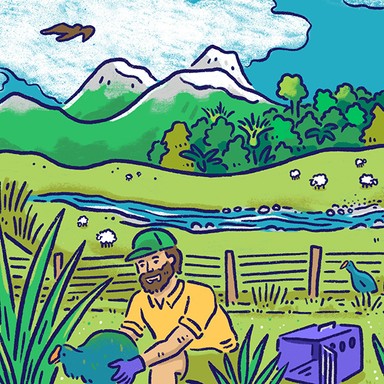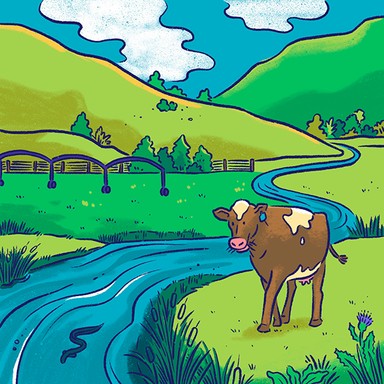
Waikato Regional Council

Transport
Helping communities get from A to B is a key responsibility of local government, from making sure the buses run on time to providing car parking and walking and cycling paths. Whether public transport is the responsibility of the regional or local council depends on where you are in the country. Local councils also own 87% of New Zealand’s roads.

Transport
Helping communities get from A to B is a key responsibility of local government, from making sure the buses run on time to providing car parking and walking and cycling paths. Whether public transport is the responsibility of the regional or local council depends on where you are in the country. Local councils also own 87% of New Zealand’s roads.
Continue to advocate and plan for a transport network that is net-zero emissions and enables the choice of the right mode for the right journey.
Enable the movement of both people and freight in a safe and efficient way. Advocate for rail freight where suitable.
Design and deliver a transport network that is accessible, equitable, connected and safe for all users. Frequent bus services.
Maintain and promote public transport options.
Enhance walking and cycling safety.
Review dangerous intersections and roundabouts.
Commit to increasing public transport services and reliability in and around Hamilton to increase access to opportunities.
Advocate for local councils to invest in decent bus stops and fully separated walking and cycling infrastructure to get around town.
Promote more electrified interregional passenger rail options, eg to Tauranga and Wellington, by partnering with central government funds.
Critically evaluate the cost vs benefit of Te Huia. The intent is good, but it is very expensive. Is there a better way of doing this?
Support improvements in roading throughout the Waikato, work with Waka Kotahi to identify useful work and lobby for funding from central.
Critically evaluate the economics of the regional bus system. Are there better ways of transporting people beyond running empty buses?
Continue to advocate and plan for a transport network that is net-zero emissions and enables the choice of the right mode for the right journey.
Enable the movement of both people and freight in a safe and efficient way. Advocate for rail freight where suitable.
Design and deliver a transport network that is accessible, equitable, connected and safe for all users. Frequent bus services.
Maintain and promote public transport options.
Enhance walking and cycling safety.
Review dangerous intersections and roundabouts.
Commit to increasing public transport services and reliability in and around Hamilton to increase access to opportunities.
Advocate for local councils to invest in decent bus stops and fully separated walking and cycling infrastructure to get around town.
Promote more electrified interregional passenger rail options, eg to Tauranga and Wellington, by partnering with central government funds.
Critically evaluate the cost vs benefit of Te Huia. The intent is good, but it is very expensive. Is there a better way of doing this?
Support improvements in roading throughout the Waikato, work with Waka Kotahi to identify useful work and lobby for funding from central.
Critically evaluate the economics of the regional bus system. Are there better ways of transporting people beyond running empty buses?
Mayor
Compare the mayoral candidates in your area
Local council
Compare the candidates for your city or district council
Regional council
Compare the candidates for your regional council
Local board
Compare the candidates for your local or community board






